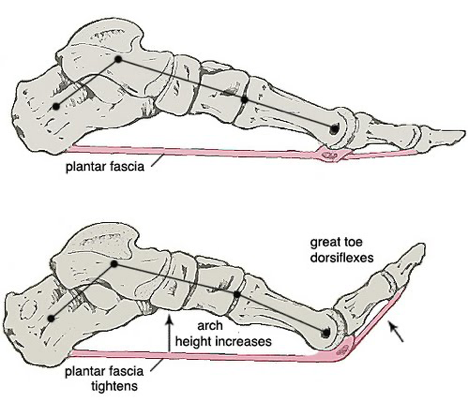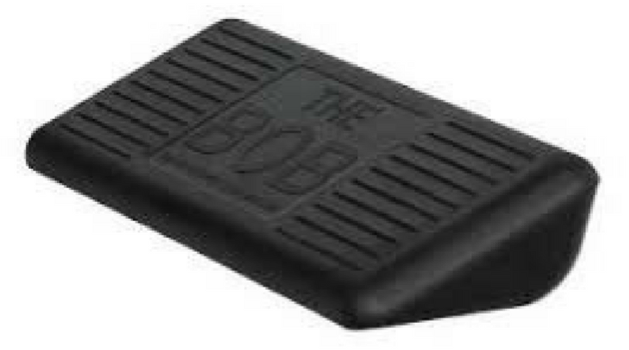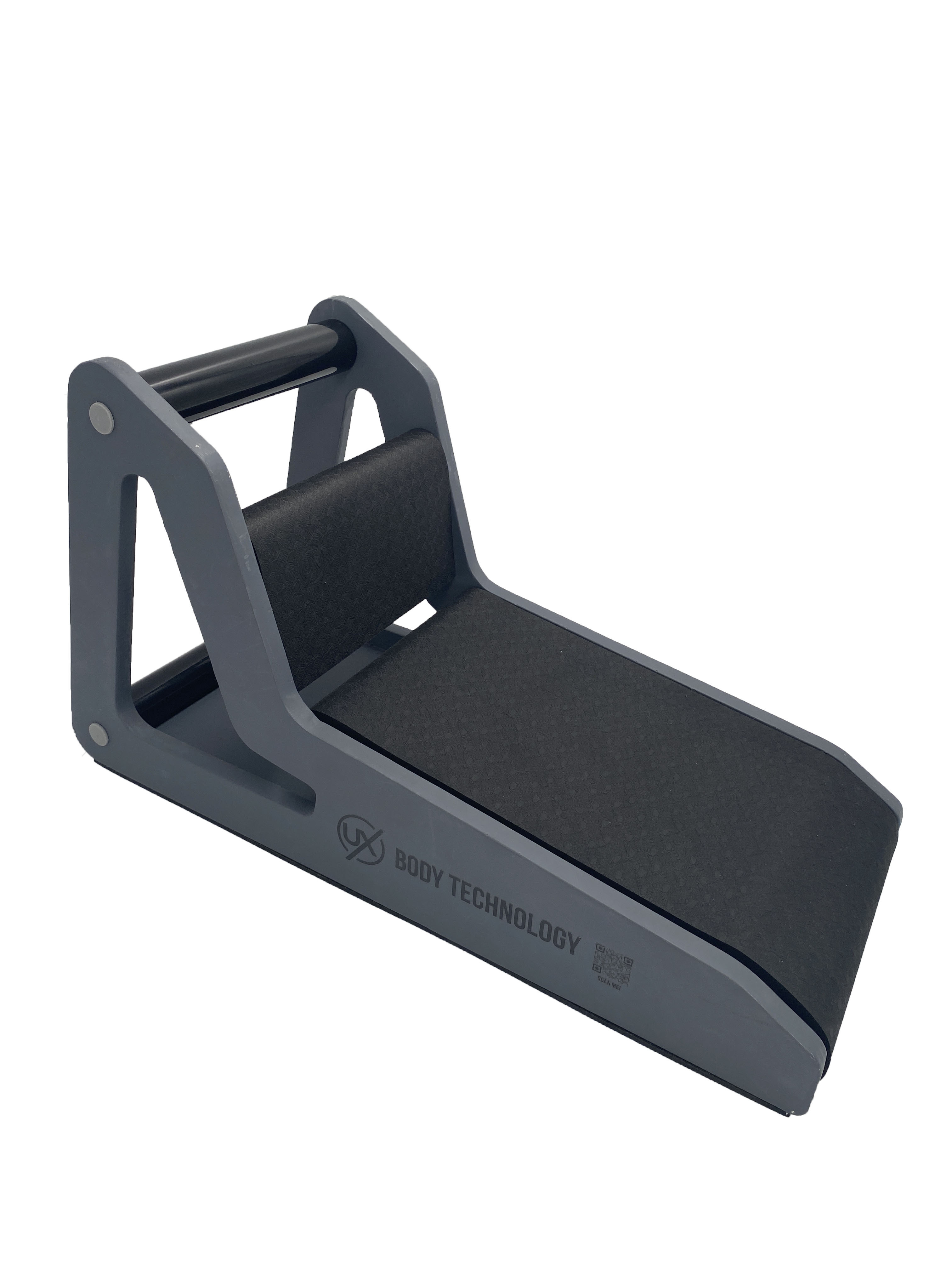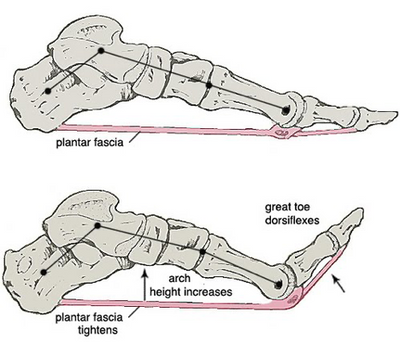 19th Aug 2021
19th Aug 2021
What is the Main Cause of Plantar Fasciitis
While there are several risk factors associated with the development of plantar fasciitis, and each individual risk factor can be the primary cause for an individual subsuming to the condition, the leading cause tends to be the stress placed on the plantar fascia from the repetitive weight bearing activities of running, walking, or dancing.
What Are the Other Risk Factors for Plantar Fasciitis
- Tight calf muscles (gastrocnemius & Soleus): It has been shown that the tightness of the calf muscles forces the foot into a pronated position which places abnormal stress on the plantar fascia leading to irritation and inflammation.
- Standing on hard surfaces for excessive periods of time: The constant and unrelieved downward force of body weight and gravity is transmitted through the weight bearing lower leg tibia bone placing stress on the arch of the foot of which the plantar fascia helps support.
- Overweight and obesity: Additional pounds bearing downward through the body’s legs to the feet places excessive forces on the arch of the foot and the plantar fascia that supports it.
- Pregnancy: As the woman increases in weight as the fetus grows, that additional weight, which is developed relatively rapidly, places stressful forces on the plantar fascia. Further, during pregnancy the female body releases increased amounts of the hormone Relaxin which causes tissue softening increasing the risk for injury to the plantar fascia and ligaments of the foot.
- Musculoskeletal foot conditions of flat foot or high arch: Both foot conditions can place additional stress on the soft tissues that support the arch of the foot and lead to irritation and inflammation of the plantar fascia and other supportive ligaments.
- Shoes with poor arch support: Having shoes that provide good support to the arch help reduce the strain on the structures supporting the arch, including the plantar fascia. Consequently, if shoes provide little or no arch support, and the person is on their feet a lot, this could lead to additional stress and irritation to the plantar fascia.
What Exactly is Plantar Fasciitis
Plantar fasciitis is a the arch supporting fascia becomes irritated and inflamed causing pain and discomfort on the plantar or bottom surface of the foot, primarily on the anterior aspect of the calcaneus or heel bone. The pain seems to intensify when first placing weight on the foot in the morning after sleeping all night, getting up from a chair after sitting for a long time, or after running or walking for a long time.
What is a Fascia
Fascia is a type of connective tissue that in one form or another covers every structure of the body and provides support to body structures, serves to bind certain structures, separate tissues, form compartments boundaries, and give structural continuity to form and function. Fascia is also rich in proprioceptors and free nerve endings that provide perception of body posture and movement.
Where is the Plantar Fascia Located and How Does it Support the Arch

The plantar fascia, is as the name implies, is located on the plantar or bottom of the foot from its attachment on the medial tubercle of the calcaneus (heel bone) to the toes passing the metatarsophalangeal joints. Because it is a strong fibrous band of tissue it contributes to supporting the arch. When weight bearing the fascia is stretched and pulls the tarsal bones of the foot together, lifting the arch and locking them to provide structural support.

What is Another Function of the Plantar Fascia
The plantar fascia plays an important role in the normal foot mechanics of walking. From its attachment at the heel bone the plantar fascia runs along the plantar surface of the foot, crossing the metatarsophalangeal joints and attaches to the toes. When walking, as a person pushes off with their foot the toes are hyperextended. This places a tension stretch on the plantar fascia (like tightening a cable) which draws the foot bones together elevating the arch (shortening the distance from the heel bone to metatarsal heads) and creating a solid foot for push off. This is referred to as the Windlass Mechanism.
Is There a Quick Test for Plantar Fasciitis
There are two tests that can be performed; one when the person is weight bearing (standing) and another test when the person is non-weight bearing. Both are referred to as Windlass Tests.
Weight Bearing Windlass Test
- Patient Position: Standing on a platform of any kind with the metatarsophalangeal joint of the big toe positioned just over the edge of the platform, equal weight being placed on both feet.
- Test Procedure: The person performing the test passively extends the first metatarsophalangeal joint while allowing the interphalangeal joint to flex. This motion is continued through a full range of motion until the patient’s pain is reproduced, which would be a positive test result.
Non-Weight Bearing Windlass Test
- Patient Position: Sitting on a table with the knee flexed at 90° and the leg hanging down.
- Test Procedure: The person performing the test stabilized the patient’s ankle by grasping the heel and then passively extends the first metatarsophalangeal joint while allowing the interphalangeal joint to flex. This motion is continued through a full range of motion until the patient’s pain is reproduced, which would be a positive test result.
Watch these two tests on YouTube |
Are There Specific Devices to Treat Plantar Fasciitis
There are a variety of devices that are designed and touted to treat plantar fasciitis. Those devices are typically aimed at providing a stretch to the plantar fascia and the calf muscles, massage of the calf muscles and sole of the foot, and a myofascial release effect to these areas. (https://www.prohealthcareproducts.com/calf-and-plantar-fasciitis-stretch-aids/ )
Two products that address these interventions are:
| The BOB Incredible Calf Master Stretch System: The BOB Master Calf is a durably made, solid urethane constructed, irregularly triangular shaped (scalene) device measuring https://www.prohealthcareproducts.com/the-bob-incredible-calf-master-stretch-system/ |  BUY NOW |
| The Foot Ramp: The Foot Ramp is an industrial strength device with unique features that measures 19” L x 8” W x 10.5” H. To learn more: https://www.prohealthcareproducts.com/the-footramp-calf-stretching-and-muscle-building-plantar-fascia-rehabilitation/ |  BUY NOW |





